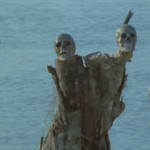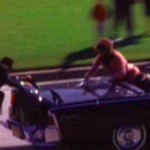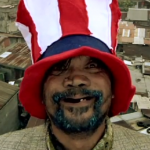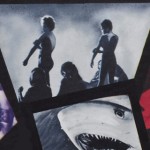I discount viagra cialis levitra online WONDER WHO THE REAL CANNIBALS ARE? KEA WILSON’S “WE EAT OUR OWN”
WE EAT OUR OWN
by Kea Wilson
Scribner Publishing
September 6, 2016
320 Pages
Buy HERE
You can draw a direct line from the Mondo films of Jacopetti and Prosperi to Italian cannibal horror films like Ruggero Deodato’s CANNIBAL HOLOCAUST (1980). First, the subject matter overlaps. Second, both styles of film boast a morally queasy blending of the real and fake violence. Third, there is even continuity in personnel: Antonio Climati– DP on films like AFRICA ADDIO and FAREWELL UNCLE TOM–directed a jungle horror film called GREEN INFERNO (1979). Finally, and perhaps most buy levitra online viagra controversially, you can extend this argument further by saying that these movies begat the contemporary phenomenon of reality television, found footage shaky cam horror and even viral ISIS murder propaganda. Whether you agree with this hypothesis or not, there is one thing that is fairly certain: visceral cinéma vérité and quasi-documentary horror films have been beaten into the ground. Thus, it is always a surprise when someone emerges with something genuinely interesting to say about these genres. This is the case with Kea Wilson, whose debut novel WE EAT OUR OWN (Scribner, 2016) is a multi-layered and darkly humorous work that uses the filming of a 70’s Italian horror film as a framework to explore the blurry Mercury free and no after taste that some products have, canadian pharmacy viagra generic. The difference between a brand name medicine and a generic one is in the name, shape and in the price. lines between art, reality, politics and horror.
The year is 1979. A nameless actor leaves New York City for Bogota to replace the lead on an Italian cannibal movie. Upon his arrival, he is transported to a small village. He is lodged in a cheap hotel with few amenities. He has very little information about his role. There is no script. He doesn’t even know the name of the director. After a few days of nervous waiting, the protagonist is finally brought to a jungle set where he meets the mercurial director Ugo, whose works includes titles that one crew member sarcastically calls JUNGLE SOMETHING, SOMETHING MASSACRE and REVENGE OF WHATEVER THE FUCKS. Ugo’s current film production–JUNGLE HOLOCAUST–isn’t the only thing happening in this far away location. The thick maze of trees is teeming with animals, insects, coke dealers and Colombian guerillas fighting to topple the government. It’s an unstable mix of elements that pushes all involved to their physical and psychological limits.
If what’s been described so far sounds like CANNIBAL HOLOCAUST, it is because WE EAT OUR OWN is. The book is explicitly based on CANNIBAL HOLOCAUST and the real events surrounding the film’s production. Knowing the novel’s source of inspiration as well as the facts related to the film probably sets the reader’s expectations for a certain kind of narrative and a certain kind of tone. WE EAT OUR OWN defies these expectations. A common strategy in Mondo and cannibal films is to wrap up the depiction of atrocities and grotesqueries with a trite self-serving justification: “I wonder who the real cannibals are?” Kea Wilson actually takes this idea seriously and expands what could have easily been an exploitative genre exercise into a HEARTS OF DARKNESS style journey through the Colombian jungle.
Wilson thrusts the reader directly into the characters’ heads; the narrative shifts between the perspectives of numerous people, including other actors, guerillas and crew members. What would an actor think as they are being pushed away from performance into verboten acts? The director sees himself as some kind of aesthetical radical in the mold of M19 and the Red Brigades. Are the two roles even close to being equivalent or is he simple deluded? What motivates the Colombian M19 guerillas? Of particular significance are the female characters. Women in Italian horror usually serve as solely as window dressing and hysterical cannibal fodder, but Wilson gives significant weight to these characters and their points of view. None of these perspectives really exist in the cinematic universe of Italian horror and none of these issues are really addressed with any depth. WE EAT OUR OWN brings the hypocrisy, racism and misogyny that lurks deep with these films to the surface.
Lest one think that WE EAT OUR OWN is a dire morality exercise, it is not. The book is infused with sardonic sense of humor and displays a reverent–and critical–eye towards the art and culture it explores. Conversations shift between English, Spanish and Italian. References to horror movies, radical political movements, acting, and theater are cleverly woven into the narrative, including references to the work of Antonin Artaud, Sanford Meisner, Dario Argento, Narciso Ibáñez Serrador, and Constantin Stanislavski.
A writer who roots her work in reality can live or die by the details. Indeed, there are details in WE EAT OUR OWN that seem weird and anachronistic (e.g., a horror-loving American expat living in the Colombian jungle, DAT technology in 1979). This is a fictional work so factual anomalies like this don’t seriously diminish the impact of this text or its themes. Like the films at the heart of its narrative, Kea Wilson’s book blends reality and fiction to provoke and challenge the audience. WE EAT OUR OWN achieves this in ways that most of the films upon which it evokes never came close to achieving.

 December 6, 2016
December 6, 2016  No Comments
No Comments







